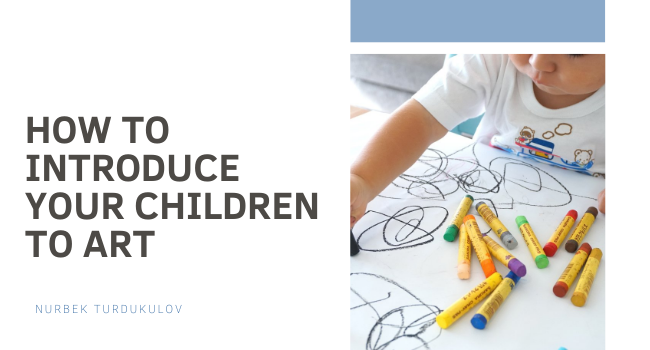As a central facet of human experience, artistic work can tell us much about what it means to be a human being. For this reason alone, many parents are keen to introduce their children to the wonders of art at a young age.
Children are often far more receptive to new information than we give them credit for; how they respond to artistic works will often depend on how information about such works is presented to them. If we can make the subject interesting, in other words, we’ll be well on the way towards introducing our children to a love of creative work.
How Children Respond to Visual Art
Firstly, it is important to recognize that most children tend to think about art through the prism of their emotions rather than through the prism of critical thought processes. Most young children are usually not at an age where they can reason through the complicated ideology of contemporary “conceptual” art. But they usually will respond to the emotional content of such works.
Indeed, many great artists were also very emotional and even childlike thinkers, and many children love the work of artists that think like they do. For example, as much of his work relies on an intuitive emotional response on the part of the viewer, you might notice that kids often respond with great enthusiasm to the work of Vincent van Gogh. You might try showing your children works by an artist like Van Gogh and asking them about their emotional response to those works.
Identifying With Artistic Works
Through this process, children will quickly learn to identify art that they personally enjoy. Because there will be a wide variety of artistic works for children to respond to, moreover, museums are fantastic places for children to learn about art. If you have access to a local museum, you might try allowing your child to find artworks that they enjoy: Let the experience be fun on your child’s own terms.
The Power of First Impressions
After all, first impressions in life are very important. And this is doubly true for children: If their first visit to a museum is an enlightening and enjoyable experience, children will retain this positive impression of art for the rest of their life. By all means, guide your children towards works that they are likely to respond to and share your own feelings about the works that you see. But let your children discover which works of art provide emotional resonance for them. After all, kids respond best to learning experiences that are fun!
Perhaps they’ll find much to love about the works of Vincent van Gogh or about the nuances of Monet’s impressionistic treatment of light and color. At the end of the day, it will be these first positive interactions with art that will change a child’s life for the better. Truly, that is art at its best!

